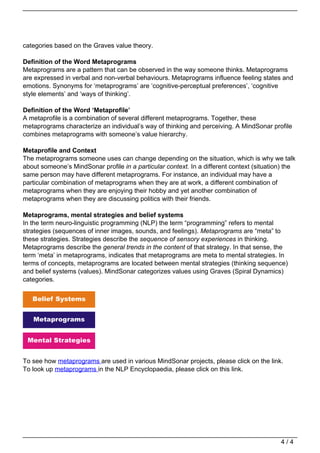MindSonar measures 13 sets of metaprograms, which describe a person's thinking style, and criteria, which represent their values. Metaprograms indicate how someone thinks, rather than what they think. MindSonar categorizes criteria using Graves' value theory into 7 categories like security, power, and ideals. It also determines the hierarchy of a person's criteria. By measuring metaprograms and categorizing criteria, MindSonar develops a profile of someone's thinking style and important values in a given context.



